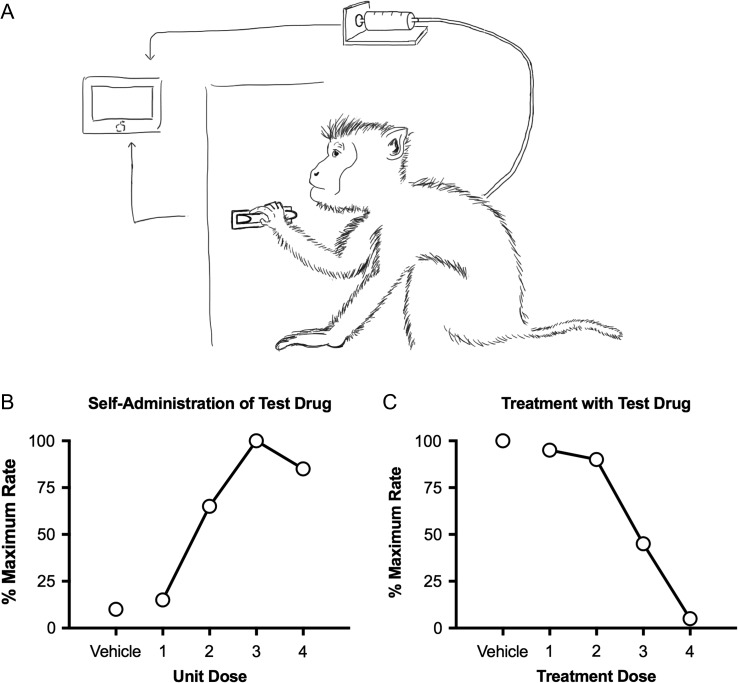Figure 1.
The top panel shows a schematic of a drug self-administration set-up for nonhuman primates. Subjects are implanted with a chronic indwelling i.v. catheter connected to a drug pump and placed into in environment that contains a response manipulandum, such as a response lever. A computer monitors responding and operates the drug pump to deliver i.v. infusions. Intravenous catheters in nonhuman primates can have either one or two lumens. The bottom left panel shows hypothetical data for an experiment to evaluate whether a test drug can maintain self-administration. In this design, responding produces i.v. infusions of the self-administered drug. If some drug dose maintains higher response rates that drug vehicle, then the drug is considered to produce reinforcing effects suggestive of abuse potential. The bottom right panel shows hypothetical data for an experiment to evaluate whether a test drug can reduce self-administration of a known drug of abuse. In this design, responding produces i.v. infusions of the abused drug (e.g., cocaine), and changes in drug self-administration are evaluated during treatment with the text drug. If the test drug selectively decreases self-administration of the abused drug, then the test drug may warrant further translational study as a candidate medication to treat substance use disorders.

